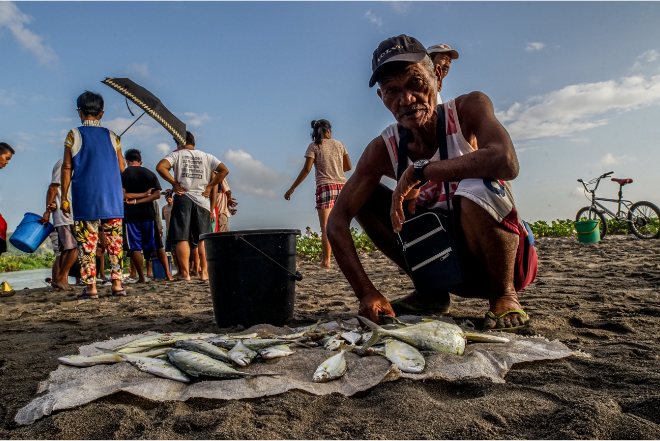
A survey of 8,000 Southeast Asian households shows the self-employed and agricultural workers suffered the steepest decline in income because of the coronavirus disease (COVID-19) pandemic.
“Household businesses and the self-employed have shown the greatest vulnerability amid the pandemic, reporting an 83% decline in income, followed by farmers and fisherman whose income dropped 60%,” said Tetsushi Sonobe, dean of the Asian Development Bank Institute (ADBI), which conducted the survey.
Majority or 73% of households said they are earning less, but only 34% reported reduced spending. Half said they did not have enough funds for their monthly needs.
The results of the survey were unveiled at a webinar of the Tokyo-based thinktank during the 53rd Asian Development Bank (ADB) Annual meeting. The survey was conducted by phone between May and July 2020 in samples of 1,000 each from eight ASEAN members: Cambodia, Indonesia, Lao People’s Democratic Republic, Malaysia, Myanmar, Philippines, Thailand, and Viet Nam.
Coping with shrinking funds
“Households in Southeast Asia experienced significant declines in employment and income during the COVID-19 crisis, correlating with the severity of domestic health situations and lockdowns,” said Sonobe.
In 44% of households, at least one family member lost their job or had working hours reduced.
Supplementary income and coping strategies have helped to cushion steep household income declines.
“Income declines were offset by drawdowns of cash and savings, which were utilized by half of the region’s households,” said Sonobe. “Delayed payments and debt repayments were used by 35% of households while 34% applied for government aid.”
“Consumption among households fell, with more than a third reducing food consumption,” said Peter Morgan, vice-chair of research at ADBI. “But consumption fell less than income, buoyed by supplementary funding and coping strategies. This suggests that government aid programs have been at least partly effective.”
Ill-prepared for online learning
The survey shows further action is needed to bridge the region’s digital divide in education widened by the pandemic.
Up to 50% of households said their children stopped attending school. While 62% of those with kids in school said online learning was available, 27% said their children do not attend these online courses or join them sometimes.
“Roughly half of households with school aged children reported that their kids did not attend school because of COVID-19. But you see quite a bit of variation by country, depending on the level of health concerns and stringency of government responses,” said Morgan.
“Online education is available to nearly two-thirds of households, but about a third of them can’t take advantage primarily due to the lack of a PC or tablet, followed by a weak internet connection or lack of one. This digital divide is an area for policy intervention going forward.”
This article was first published by BIMP-EAGA on 18 September 2020.

